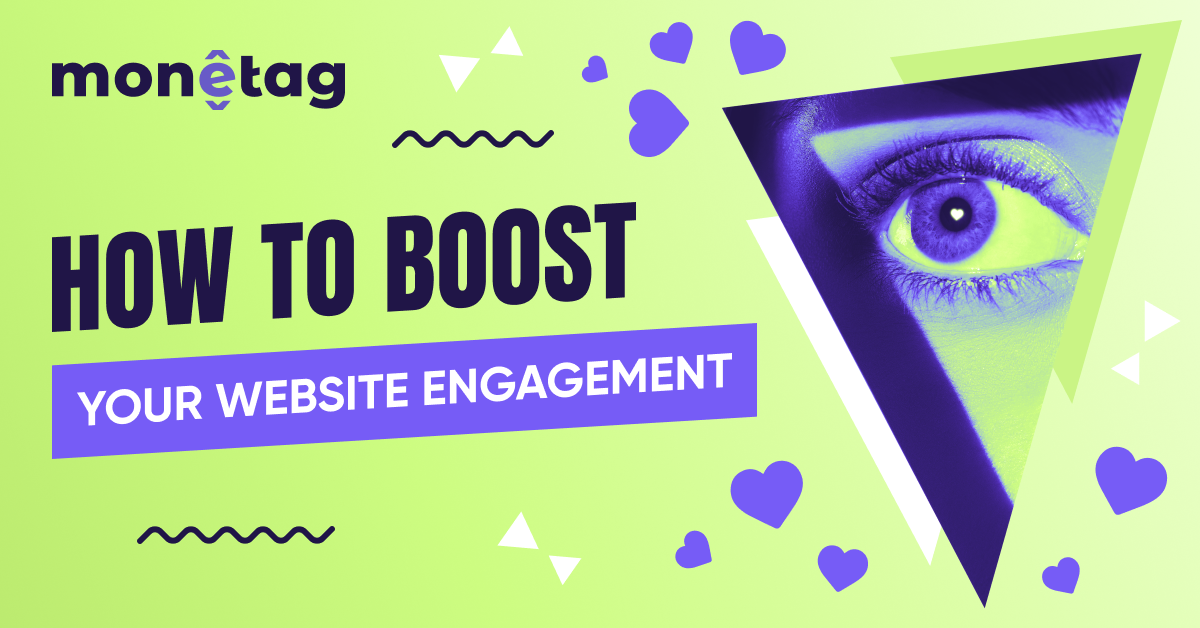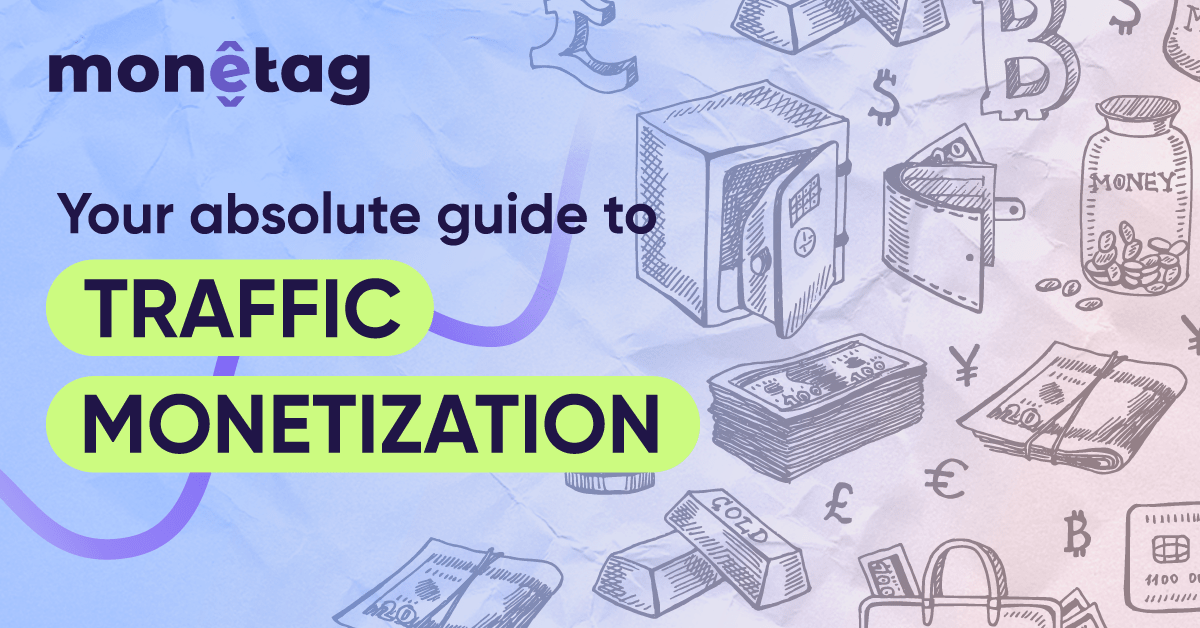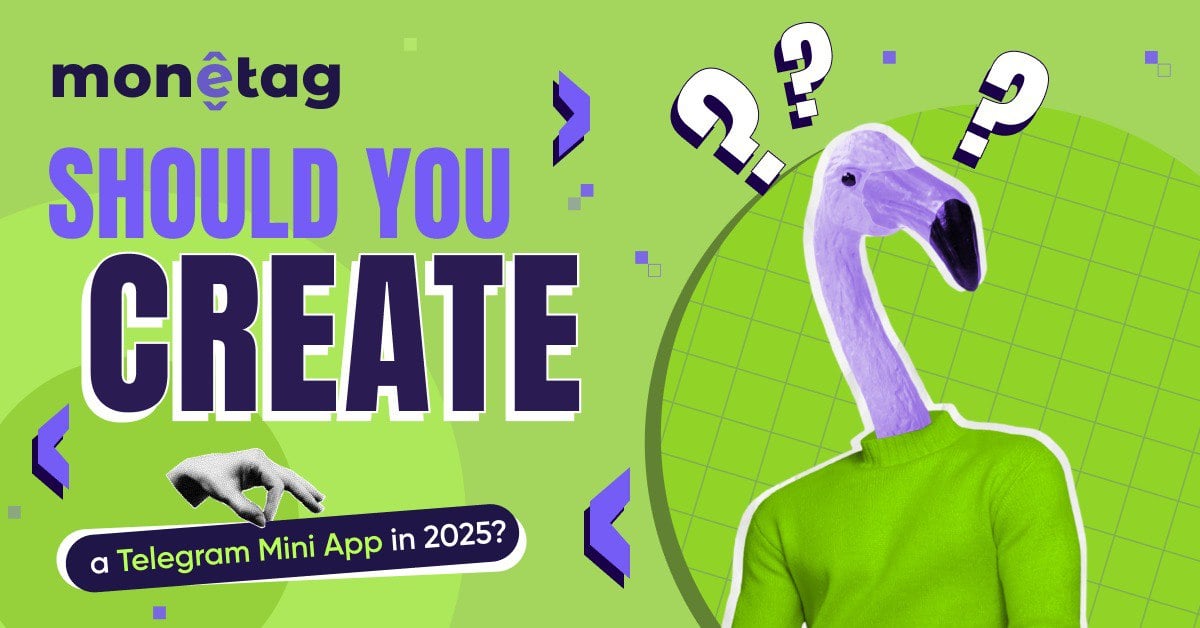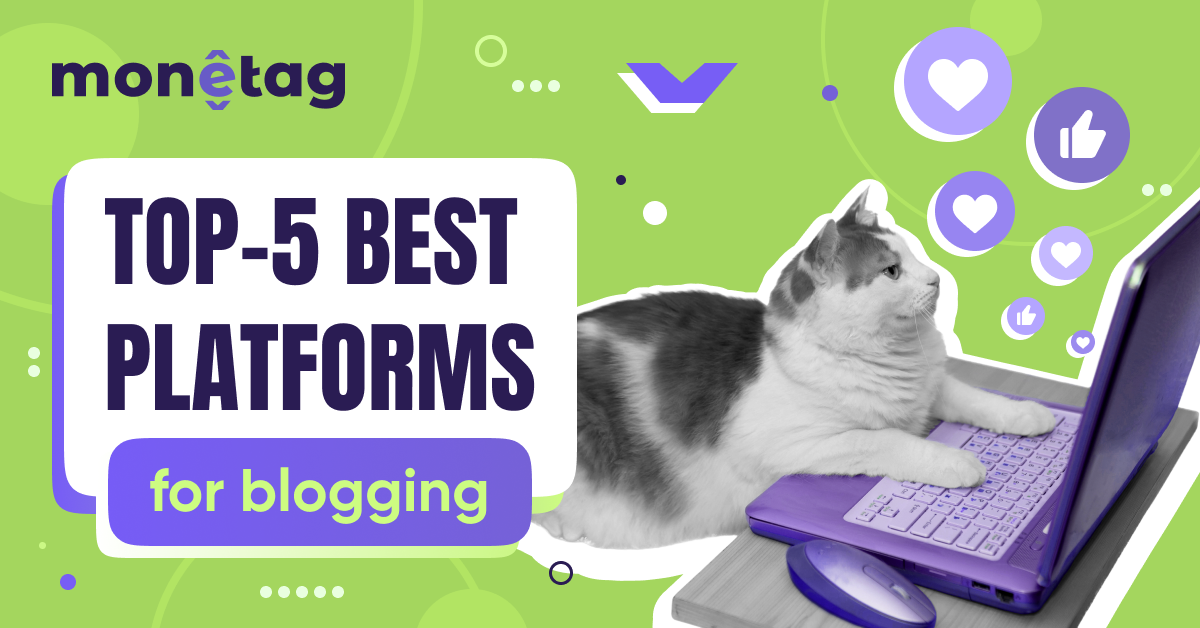In Tune with the Future: How Publishers Can Benefit from Chat GPT?
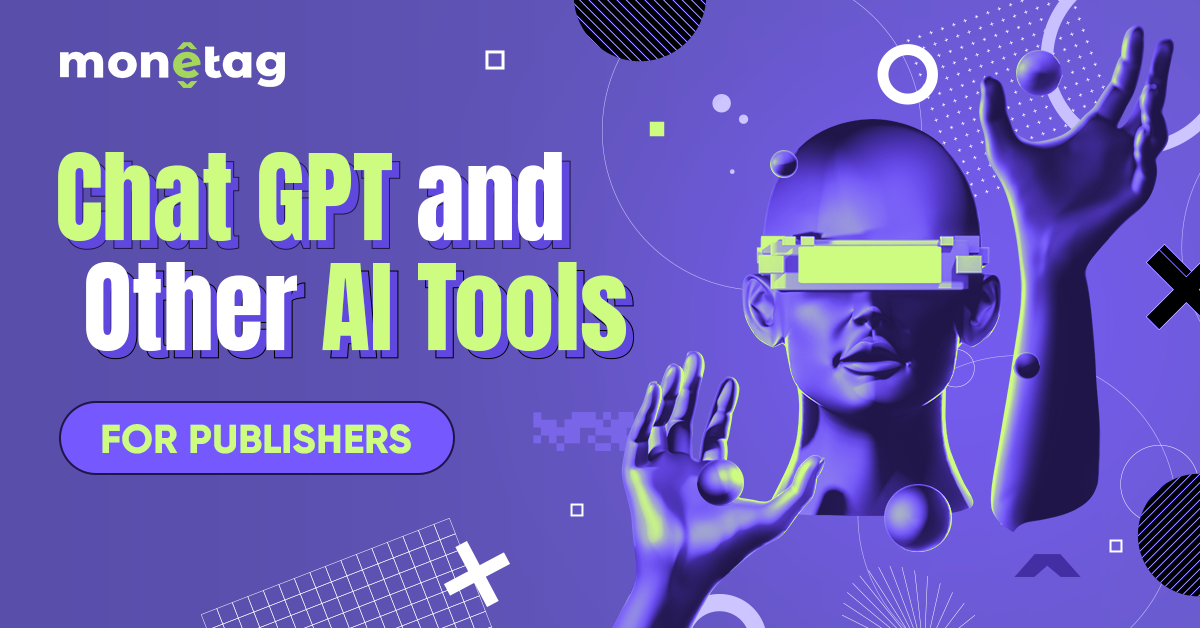
This post is also available in:
Pt
Es
The biggest trend of 2023 is Chat GPT, a linguistic model, chatbot, and a whole depositary of information. We don’t know if the hype is going to subside soon, but we do know that Chat GPT is something publishers can benefit from right now. How can this new technology help you? We have some ideas to share!
What is Chat GPT, and how to make it work right?
The nature of the technology behind Chat GPT is an artificial intelligence model designed to understand and generate human-like text based on the input it receives. So basically, the success of your cooperation with Chat GPT heavily depends on how accurately you formulate your requests.
We asked Chat GPT how to formulate your requests correctly and, therefore – get what you want. Here are some tips we received:
- Be concise: Keep your requests clear and to the point. Avoid unnecessary information or lengthy explanations that may lead to confusion.
- Specify context: Provide relevant context or background information to help me understand the context of your request. This can include details about the topic, any relevant previous statements, or the specific problem you’re trying to solve.
- Ask direct questions: If you have a specific question in mind, ask it directly. This helps me understand your information needs more accurately and provide a focused response.
- Use specific language: Be clear in your language. Avoid ambiguous or vague terms that may lead to misunderstandings. If there are specific details or parameters you need, clearly state them in your request.
- Break down complex queries: If your request involves multiple components or sub-questions, consider breaking them down into smaller, separate requests. This allows for better clarity and helps in addressing each part effectively.
- Provide examples or specifics: If applicable, provide examples, specific cases, or scenarios related to your request. This can help me generate more relevant and tailored responses.
- Ask for clarification: If my initial response doesn’t fully address your request or you need further information, don’t hesitate to ask for clarification. I’m here to assist, and I can provide additional details or refine my responses based on your feedback.
Okay, now you know how to approach Chat GPT efficiently. Let’s move to the next part and see how exactly you can use it.
How can publishers make use of Chat GPT?
In general, there are three main task pools where Chat GPT can be extremely useful for publishers:
Communication with customers
By integrating Chat GPT into a website, publishers can utilize it as a virtual assistant or chatbot to handle customer inquiries and provide support.
The bot can respond to frequently asked questions, offer guidance, and assist with navigation, delivering a full-fledged customer support experience. You can teach Chat GPT how to respond to certain questions and guide your visitors through the website.
The bot can respond to frequently asked questions, offer guidance, and assist with navigation, delivering the full-fledged customer support experience. You can teach Chat GPT how to respond to certain questions and guide your visitors through the website.
SEO
GPT can also help website owners with keyword research, generation of SEO-friendly titles/descriptions, SEO audits to identify the areas for improvement, and competitive analysis.
We asked Chat GPT to create a title and description for a pet shop landing page + to find some keywords. Here is what we got:
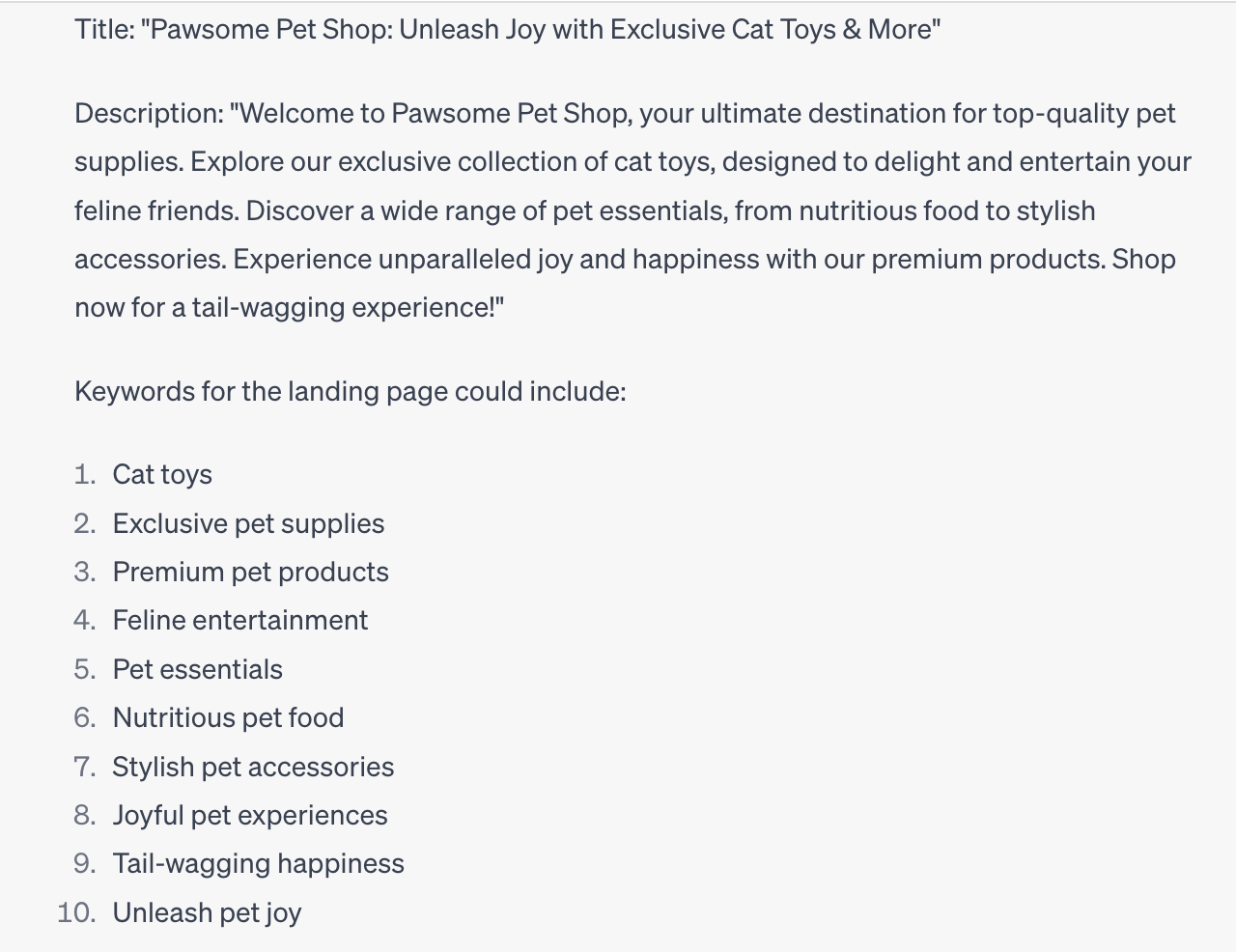
We find the name Pawsome really nice!
Content generation
Website owners can leverage Chat GPT’s capabilities to generate compelling copies for various purposes. Whether it’s creating engaging landing page content, crafting email newsletters, writing blog posts, or generating social media captions, it can help with generating text that captures the desired tone, style, and messaging.
Customer support and SEO are available for those tech-savvy publishers who can integrate Chat GPT script into their websites. Let’s discuss these functions in more detail.
Benefits of Chat GPT script for your website
So if you are serious about using Chat GPT for your business and ready to get through the technical complexities to implement it, here is what you will get:
- Fast customer support + recommendations: chatbot can provide immediate responses to user inquiries and offer tailored suggestions to them based on their requests. Say, Chat GPT can consult visitors about your products and offer relevant suggestions to drive conversions.
- Data collection and analysis: Chat GPT gathers valuable user interaction data, allowing website owners to gain insights for market research and content optimization.
- Customization and training: Website owners can train and refine Chat GPT to align with their industry, brand, and user needs, improving its effectiveness over time.
Benefits of Chat GPT for content generation
Okay, maybe you didn’t hear about Chat GPT’s script from the previous section, but you definitely know about its huge capacities when it comes to text writing. Let’s recall and specify:
- Different types of texts: GPT can help you produce blog posts, articles, product descriptions, social media captions, creative writing, and other copies. Additionally, it can assist with editing and proofreading, offering suggestions to enhance the quality and clarity of your content. Just make sure to specify which tone, style, and length you want.
- Variety of topics: The tool has been trained on a diverse range of topics, allowing it to provide insights and generate content on a wide array of subjects. From technology and science to arts, business, and more, Chat GPT can assist with creating content and offering valuable input across various domains.
- Translation: Chat GPT can generate text in a range of languages, including English, Spanish, French, German, Italian, Portuguese, Dutch, Chinese (simplified and traditional), Japanese, Korean, and more. The only thing to remember is that GPT was trained mostly on English texts, so it has the strongest grasp in English, while its level of proficiency in other languages may vary.
- Knowledge extraction and summarization: Also, the tool can help extract relevant information from large texts or documents, condense information into concise summaries, and provide answers to specific questions. This can definitely save your time.
- Language adaptation: Chat GPT also knows how to adapt content to specific regions or target audiences by taking into account cultural nuances, idiomatic expressions, and localized variations of the language.
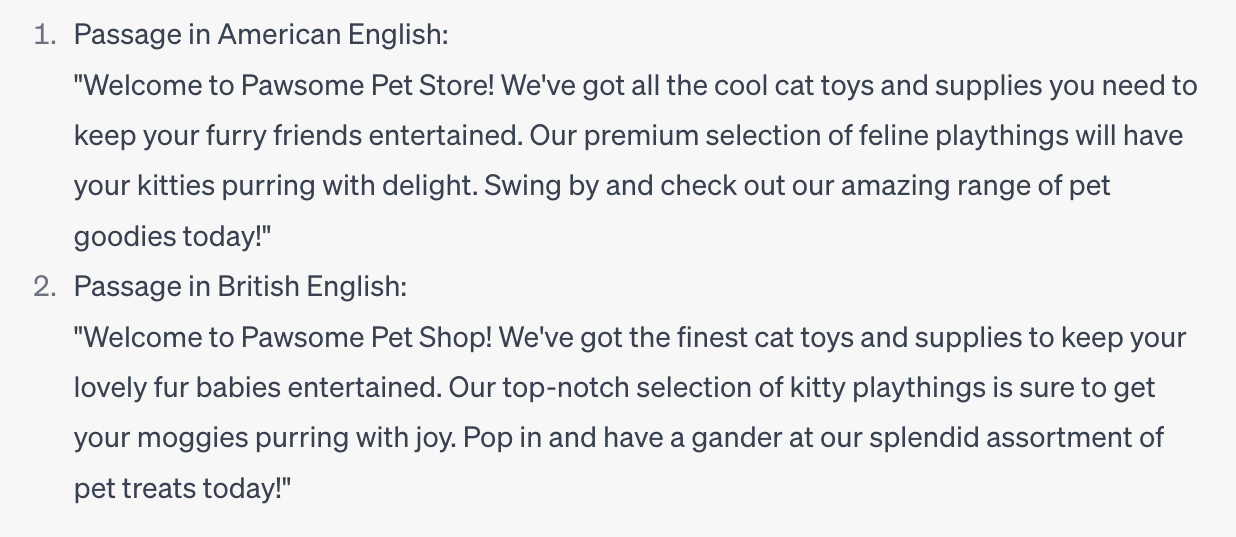
- Social media management: The tool has been trained to assist with generating social media posts, captions, and hashtags optimized for different platforms, helping website owners effectively engage with their audience.
Now let’s see an example of how Chat GPT deals with different types of marketing texts:
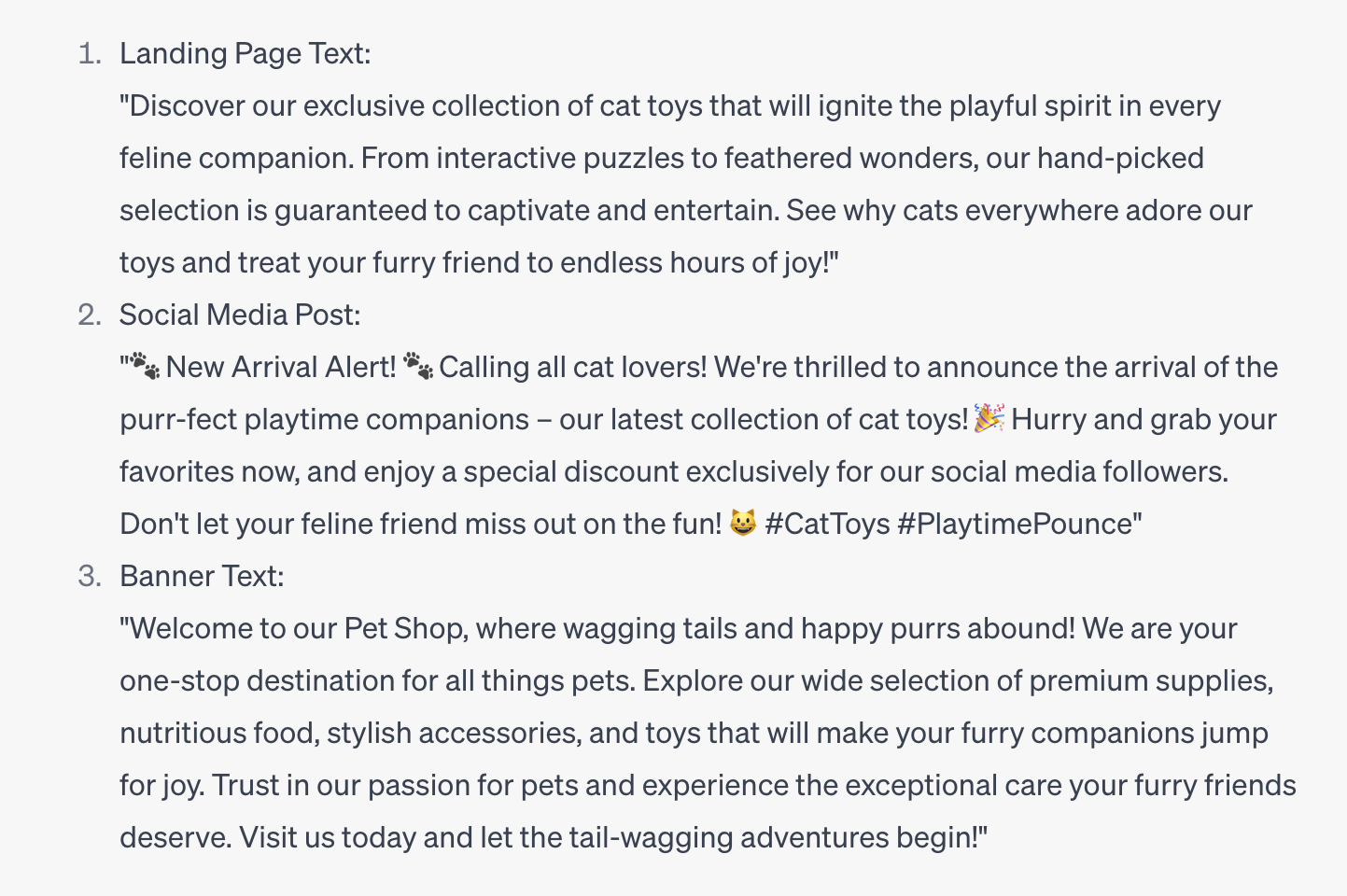
Basically, Chat GPT can be a really multi-functional assistant that covers numerous tasks really fast and mostly, it does a good job. At the same time, while GPT can assist with content creation, human oversight, and input are valuable for ensuring accuracy, fact-checking, and maintaining a consistent brand voice. Collaboration between AI-generated content and human editors can result in the best outcomes.
Are there any alternatives to Chat GPT?
And if one AI tool doesn’t seem enough to you, here is a list of alternatives to Chat GPT you can also try:
- OpenAI’s GPT-3: GPT-3, developed by OpenAI like Chat GPT, is a powerful language model that can generate human-like text. It offers similar capabilities in content generation, language translation, and more.
- Google Cloud Natural Language API: Google’s Natural Language API provides various natural language processing features, including sentiment analysis, entity recognition, and content classification, which can be useful for understanding and analyzing text data.
- IBM Watson Natural Language Understanding: IBM Watson offers Natural Language Understanding, an AI-powered tool that can extract metadata from text, analyze sentiment, identify entities and categories, and perform content classification, among other tasks.
- Microsoft Azure Cognitive Services: Microsoft Azure provides a suite of cognitive services, including the Text Analytics API, which offers sentiment analysis, keyphrase extraction, language detection, and entity recognition to analyze and understand text data.
- Hugging Face Transformers: Hugging Face provides a library of pre-trained models for natural language processing tasks. It includes various models, such as BERT, GPT-2, and more, which can be fine-tuned for specific tasks like text generation, text classification, and question-answering.
So, this is it! Embrace the future and add AI tools to your publisher’s arsenal – we are convinced that this will make your workflow easier and more efficient!

